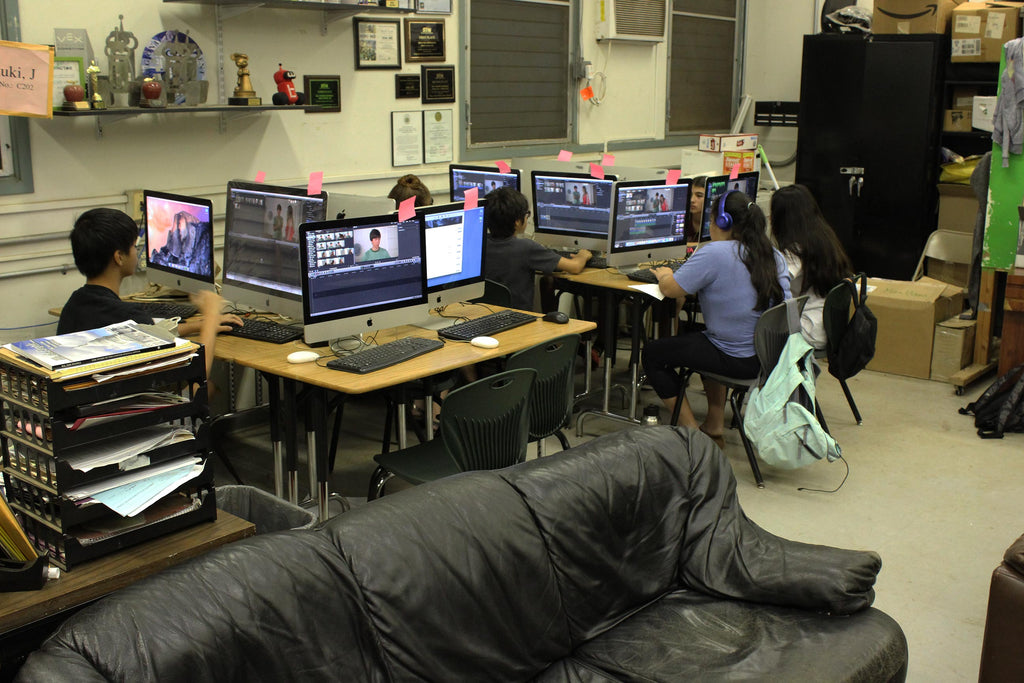
Day 1: Teaching Scripted Drama with Pool Party
“Don’t write because you want to say something. Write because you’ve got something to say.” - F. Scott Fitzgerald
One of my favorite projects for beginners is the Pool Party scene from the film Reflection. This project includes a script and storyboards along with the footage. What makes this project so great is that there is a lot of subtext to the dialogue in scene three. In this scene a young man with a bad case of pimples is desperately trying to ask out a girl who may or may not like him back.
We start the class by reading the script out loud. Then we talk about what the goals are for each character. Next we look through the storyboards and see the director’s plan for the scene. What is the point of each one of those shots? What is the director trying to say?

Finally we start watching the dailies, but I like to do this as a group. In the old days of film editing watching the dailies was a daily event that included not just the editor, but the director and often even the producers of the film. The students and I will talk about what each of the camera angles means. When is it best to use a wide shot vs a close up? When do we want to see Cheese and when do we want to see Sarah?
At this point I take the opportunity to introduce the concept of a lined script (learn how to read a lined script). Since there are only a few shots it’s easy for the kids to see what the squiggly lines mean without getting lost in too much coverage.

Finally it’s the kids turn to take a crack at editing the scene. At first I only give them one shot from each camera set up. That’s only one close up of each character and a wide shot of the whole scene. I don’t give them alternate takes at this point because I want to see that they know how to pick the appropriate camera angle first. My motto has always been to break down complicated ideas into their smallest building blocks first. It can be overwhelming for students to edit a scene with lots of takes. They just don’t know where to start. I teach picking performances in a later lesson.
The other good part of only giving them one take per camera set up is that they can concentrate on pacing. This is where I introduce Walter Murch’s rule of 6. For those who need a refresher:
Walter Murch’s Rule of 6: Why Make A Cut:
- Emotion 51%. Put the emotionally important lines and reactions on screen.
- Story 23%. To show new and important information about the story.
- Rhythm 10%. Pacing of the cut.
The Next three compliment the top three: They are the “bonds between the atoms.”
- Eye Trace 7%. Where the objects are in the frame when you cut from one shot to the next. Eye contact is a good example.
- 2D Space 5%. Teach about crossing the 180 degree line here.
- 3D Space 4%. When to use establishing wide shots and so on.
At the end of every day the students watch each other’s cuts. At this point mostly it’s me giving constructive feedback on their work. Students may chime in if they have ideas. This process is extremely important. Make sure you do this at the end of each day. In my opinion, feedback is the single most important part of learning to edit that a teacher can offer their students.








